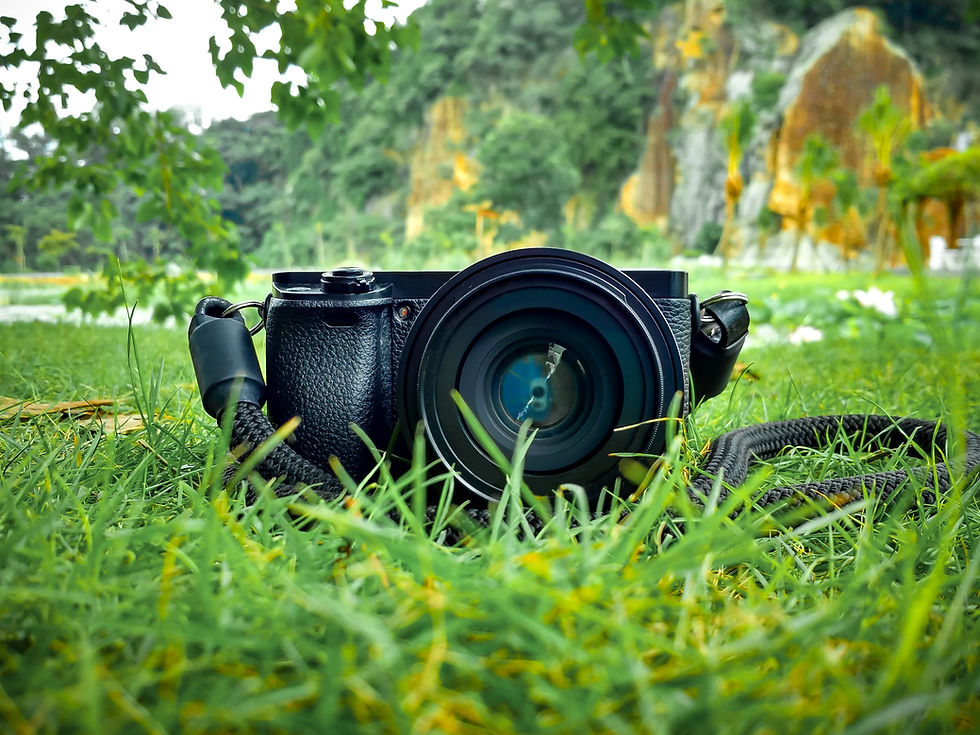8 Tips for Beginners Using Sigma Cameras
- SIGMA Photo
- Aug 28
- 3 min read

Starting your photography journey with a Sigma camera is an exciting step into the creative world of capturing images. Whether you’re documenting daily life, exploring landscapes, or experimenting with portraits, Sigma cameras offer tools that balance innovation, image quality, and user-friendly design. For beginners, learning how to make the most out of your camera can transform ordinary snapshots into professional-looking photos. This guide provides eight practical tips to help you maximize your experience with Sigma cameras and develop confidence behind the lens.
Why Beginners Choose Sigma Cameras
Sigma has gained a reputation for crafting high-quality cameras and lenses that focus on precision and creativity. Their cameras often appeal to beginners because they combine professional features with approachable usability. The designs are compact yet powerful, making them suitable for those starting photography without overwhelming complexity. Additionally, pairing a Sigma camera with Art or Contemporary lenses provides flexibility for genres like travel, portraits, street, and even landscape photography.
Tip 1: Understand Your Camera’s Basic Settings
Every Sigma camera, whether it’s from the fp series or earlier models, comes with essential settings like ISO, shutter speed, and aperture. Learning how these three elements interact is key to controlling exposure. Spend time practicing in manual mode so you can understand how changes in these settings affect your images. For example, adjusting ISO helps in low-light conditions, while shutter speed determines how movement is captured.
Tip 2: Start with a Versatile Lens
As a beginner, choosing one reliable lens can simplify your learning process. A standard prime or a zoom lens such as a 24-70mm offers flexibility for capturing portraits, everyday moments, and landscapes. Sigma’s lens lineup gives beginners access to both affordability and professional sharpness, making it easier to experiment across different photography styles.
Tip 3: Experiment with Aperture for Creative Effects
Aperture not only affects exposure but also the depth of field in your images. Wider apertures (like f/1.4 or f/2.8) create a blurred background that makes your subject stand out, while smaller apertures (like f/8 or f/11) keep more of the scene sharp. Practicing with aperture will help you understand how to create professional-looking photos even as a beginner.
Tip 4: Use Natural Light to Your Advantage
Lighting is one of the most important aspects of photography. Beginners using Sigma cameras can start by working with natural light, such as shooting during the golden hour—just after sunrise or before sunset—for soft, warm tones. Avoid harsh midday light unless you’re experimenting with dramatic shadows. Understanding light direction and intensity will improve your images significantly.
Tip 5: Explore Your Camera’s Autofocus Features
Modern Sigma cameras are equipped with efficient autofocus systems that make capturing sharp images easier. Beginners should explore different autofocus modes—such as single-point for portraits or continuous tracking for moving subjects. Practicing with these settings helps ensure that your photos remain crisp, whether shooting people, pets, or wildlife.
Tip 6: Practice Composition Techniques
Great photos are not only about technical settings but also about how elements are arranged in the frame. Learn simple composition rules such as the rule of thirds, leading lines, or symmetry to make your images more engaging. Over time, these techniques will become second nature, allowing you to create impactful visuals with minimal effort.
Tip 7: Keep Your Gear Clean and Protected
Beginners often overlook the importance of maintenance. Dust, fingerprints, or scratches can reduce image quality. Always keep a cleaning cloth handy and consider storing your camera in a protective bag when not in use. Accessories like the BF system also demonstrate how thoughtful design and add-ons contribute to extending the longevity of your equipment.
Tip 8: Review and Learn from Your Photos
The best way to grow as a beginner is by reviewing your work. After each shoot, look at your images critically to see what worked and what didn’t. Adjust your settings next time based on those observations. Many professionals began by experimenting, analyzing, and practicing repeatedly with accessible cameras like those made by Sigma.
Additional Advice for Beginners
Shoot regularly: Consistency builds skill and confidence.
Don’t be afraid of mistakes: Every error is part of the learning process.
Explore different genres: Try landscapes, portraits, or macro to see what inspires you most.
Conclusion
Sigma cameras provide beginners with a gateway to professional-quality photography without unnecessary complexity. By mastering settings, experimenting with light and composition, and maintaining your gear, you can quickly progress from novice to confident photographer. These eight tips not only build technical skills but also encourage creativity, ensuring your journey with Sigma cameras is both rewarding and inspiring.







Comments